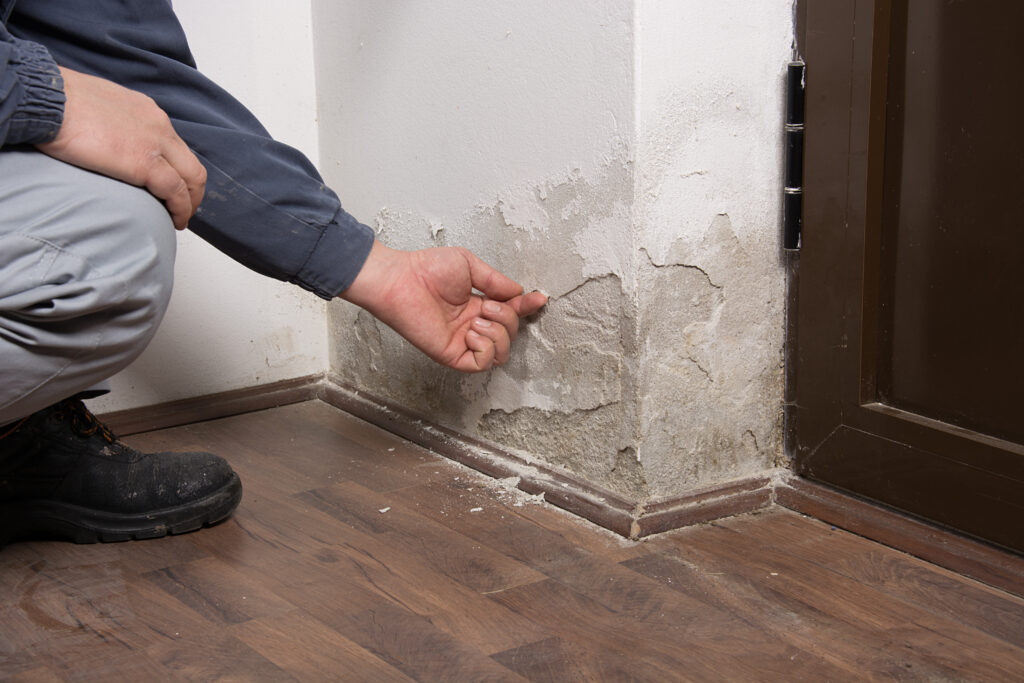Damp walls are a common but concerning issue in many homes. Not only can they ruin the appearance of a room, but they can also lead to serious structural damage and health problems if not dealt with properly. This article will guide you through the process of identifying, repairing, and preventing damp in your internal walls, with expert advice drawn from the industry’s leading sources.

Identifying the Cause of Dampness
Understanding the Types of Damp
Identifying the cause of damp is the first crucial step. Different types of damp require different approaches:
- Rising Damp: Moisture from the ground rises through brickwork. Look for tide marks and damaged skirting boards.
- Condensation: Caused by poor ventilation, resulting in water build-up. Check for wet walls, especially in bathrooms and kitchens.
- Penetrating Damp: Water seeping through cracks or joints. This will usually present as isolated wet patches.
Investigating the Source
A proper investigation may involve tools like moisture meters and professional inspections. It’s wise to consult an expert, as identifying the root cause ensures the right treatment method.
Repairing the Damage
Treating Rising Damp
Rising damp can be a tricky issue to fix. It may require a new damp-proof course (DPC), which often involves drilling into the brickwork and injecting a silicone-based cream. This creates a barrier that moisture cannot penetrate.
Dealing with Condensation
Condensation is one of the most common causes of damp and typically results from daily activities like cooking, bathing, and drying clothes indoors. It occurs when warm moist air comes into contact with cold surfaces, such as windows or walls, leading to water droplets forming. Factors such as poor insulation, inadequate heating, lack of ventilation, and living habits can exacerbate the problem. To prevent condensation:
- Ventilate Properly: Open windows regularly, especially after/during cooking or bathing, and use extractor fans if available.
- Heat Evenly: Maintain a consistent temperature throughout the home. Sudden changes in temperature can lead to condensation.
- Insulate: Proper insulation helps maintain an even temperature and reduces the occurrence of cold surfaces where condensation can form.
- Avoid Drying Clothes Indoors: If possible, dry clothes outside or in a well-ventilated area. Wet clothes can significantly increase moisture levels indoors.
- Use a Dehumidifier: A dehumidifier can help control the humidity level, reducing the chances of condensation.
- Keep Furniture Away from Walls: Allowing air to circulate around furniture helps to prevent cold spots and thus reduces condensation.
Understanding and tackling condensation is a vital step in controlling dampness. It requires a combination of adequate heating, insulation, and ventilation, along with mindful living habits.
If condensation is the culprit, ventilation is vital. Installing extractor fans, using dehumidifiers, and ensuring that rooms are aired out regularly can prevent this problem. It might also help to insulate cold surfaces where condensation can form.
Fixing Penetrating Damp
For penetrating damp, the repairs may involve sealing any cracks or defects in the walls, windows, or roof. Waterproof paint or render can provide an additional layer of protection.
Prevention Tips
Regular Maintenance
Keeping an eye on the property and addressing minor issues promptly can prevent more serious problems later on. Regularly check for cracks, leaks, and other defects.
Good Ventilation
Proper ventilation can do wonders to reduce the risk of damp, particularly in areas prone to condensation like bathrooms and kitchens.
Professional Inspection
Consider having periodic professional inspections, even if no problems are evident. Prevention is better than cure, and early detection can save time, stress, and money.
Long-Term Solutions
Remember, damp can be a recurring issue if not treated properly. Investing in quality materials and professional services can ensure a long-lasting solution. From internal damp-proofing to proper insulation and ventilation, quality work will pay off in the long run.






